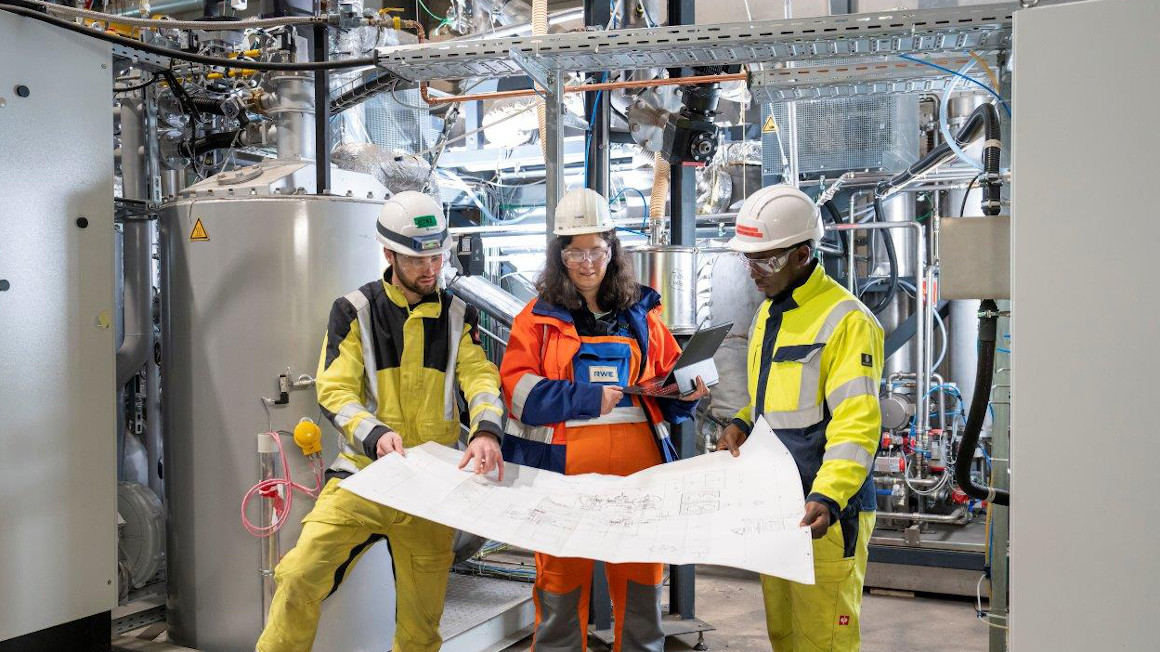Sustainable hydrocarbons from biomass
A pyrolysis plant developed by Fraunhofer researchers was commissioned at RWE's Niederaussem research site to convert residual and waste materials into high-quality hydrocarbons.

The decision to phase out coal has been made. From 2030, no more coal is to be mined in Germany. Regions like the Rhineland must therefore rethink. With the BioeconomyREVIER, the NRW state government has already set the course for a bio-based and sustainable economy in 2020. However, in order to drive structural change forward, corresponding innovations from research and development must be put into practice as quickly as possible. A pyrolysis plant developed by the Fraunhofer Institute UMSICHT for the recovery of sustainable hydrocarbons from biomass has now gone into operation on the research site of the energy company RWE in Niederaussem.
Test run for Fraunhofer pyrolysis plant
The basis of the research reactor developed by the Fraunhofer Institute is the so-called TCR process - a pyrolysis process that works on the principle of thermocatalytic reforming and includes a downstream reforming step. "The TCR process is a process that has a lot of potential to produce synthetic fuels. That's why we're testing this technology in Niederaussem to make it even more efficient and cost-effective," says RWE project manager Natividad Jordan Escalona.
Sewage sludge as a source of hydrocarbons
In Niederaussem, the pilot plant will convert sewage sludge into a hydrogen-rich gas, carbonate and oil. These can later be processed into low-CO2 fuels or other chemical products. The oil phase of the process, for example, will be used to produce high-value liquid hydrocarbons and fuels. The solid carbonisate, also known as sewage sludge coal, is in turn used on an experimental basis in a high-temperature conversion plant to recover the phosphorus content from sewage sludge. The plant was also built by RWE as part of the Innovation and Technology Center Carbon Conversion (ITZ CC) project. However, the carbonizate could also be used to produce activated carbon or hydrogen.
Potential for recycling other residual and waste materials
Other biogenic residues such as fermentation residues from biogas plants could also serve here as a raw material base and thus sustainable hydrocarbon source, as Johannes Neidel, project manager at Fraunhofer, explains. "We aim to recycle biogenic residues and waste materials across a broad spectrum, which will result in high-quality products. A particular focus is on the liquid hydrocarbons produced, which are in the form of oil with comparable properties to fossil crude oil, and on stable long-term operation." In addition, the Fraunhofer researchers want to further optimize and automate the pyrolysis plant.
The pilot plant was developed as part of the joint project ITZ CC and funded by the state of NRW. In addition to the Fraunhofer researchers, RWE Power AG and the Ruhr University Bochum are involved in the project.
bb


